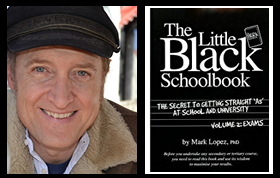Dr Mark’s The Meaning in a Nutshell
Jane Austen, Pride and Prejudice (1813)
Jane Austen’s Pride and Prejudice (1813) is a romance novel written by a woman, about women and mainly for women. It focuses on the social world of women who are from the rural middle class (gentry) and lower aristocracy in Britain during the Regency era at the beginning of the nineteenth century. It features the quest of young women to find an eligible husband. Finding a good match for a husband is treated as the central challenge of their existence.
Ideally, a potential husband should be handsome, charming and well-mannered, possess a good fortune to provide for a comfortable life, and possess similar values and interests to provide for good conversation and shared pleasures. Importantly, there also needs to be love. In this novel, young women are torn between choices of marrying for love or wealth, when ideally they should marry for both. The romantic heroine of the novel, Elizabeth Bennet, marries a man, Darcy, who provides all these desirable qualities. Similarly, her sister Jane finds in Mr Bingley a man who provides these qualities for her. But not all of the women in the novel find happiness.
The novel presents several characters who married for the wrong reasons and did not find bliss. The pessimistic Charlotte Lucas married an unromantic man in Mr Collins, choosing material comfort over love and therefore choosing a mediocre life lacking fulfilment. Elizabeth’s father Mr Bennet married a woman whose beauty was not matched by her intelligence and this left him unfulfilled in marriage once her beauty faded and her shallowness came to the fore. The roguish Wickham and the flirtatious Lydia Bennet were drawn together opportunistically by a lust that soon faded. They married to mitigate a scandal and ended up living as social outcasts in a loveless marriage. The experiences of both the happy couples and unhappy couples provide complementary lessons to the readers on the need to hold out to find the right partner for happiness.
Above all, Austen’s novel is a romance novel and this is where the novel provides its entertainment and insight. Austen looks closely at the psychology of romance, to evoke its ebb and flow, as well as its drama and pace. Austen, like other writers of romantic fiction, treats romance as love with obstacles. The obstacles placed in front of the potential lovers, notably Darcy and Elizabeth, create challenges that heighten the intensity of their feelings for each other and create several dramas and surprises, beginning from when these individuals meet and are initially attracted to each other and then throughout the convoluted process of their seeking to be united. These obstacles require effort to overcome them, an effort that intensifies their feelings of love and intensifies the focus of the two lovers on each other as the principal source of happiness and fulfilment in their lives. Eventually, being together is what matters most. Once the obstacles are overcome, the romance ends happily in love and marriage.
As a thoughtful, well-observed novel about the intricate game of romance, it loosely frames the story of courtship and love around two human frailties that can keep two individuals apart and deny them the happiness they deserve: pride and prejudice – with pride being a fault of Darcy and prejudice being a fault of Elizabeth. Austen believes that sometimes potential lovers have to recognise and address their faults so they can be together. These faults are obstacles that need to be overcome so a happy union can result.
Jane Austen is an acute observer of her social world, which is the world of the gentry and lower aristocracy. Austen was from the gentry. Austen saw society from this perspective. She was acutely aware of snobbery. She was part of the gentry but not highly ranked in it, so she would have observed or experienced snobbery from those higher up the social rankings. A respect for rank combined with distaste for snobbery is reflected in her novel. Notably, Elizabeth is declared to be of the same class as Darcy (the gentry) and therefore presented as worthy of marrying him. But Darcy is of a much higher rank within this class and is therefore a catch. The novel celebrates the notion of marrying up, in regards to the unions of Elizabeth and Darcy and of Jane and Mr Bingley, while exhibiting distaste for the snobbery that could have prevented this happening.
Student resources by Dr Mark Lopez
© Mark Lopez 2021 All RIGHTS RESERVED
The purpose of the concise notes of Dr Mark’s The Meaning in a Nutshell is to provide much needed help to students seeking to unlock the meaning of the texts with which they have to deal. (More elaborate notes are provided in lessons as part of my private tutoring business.)
Subject: Pride and Prejudice meaning, Pride and Prejudice themes, Pride and Prejudice analysis, Pride and Prejudice notes
